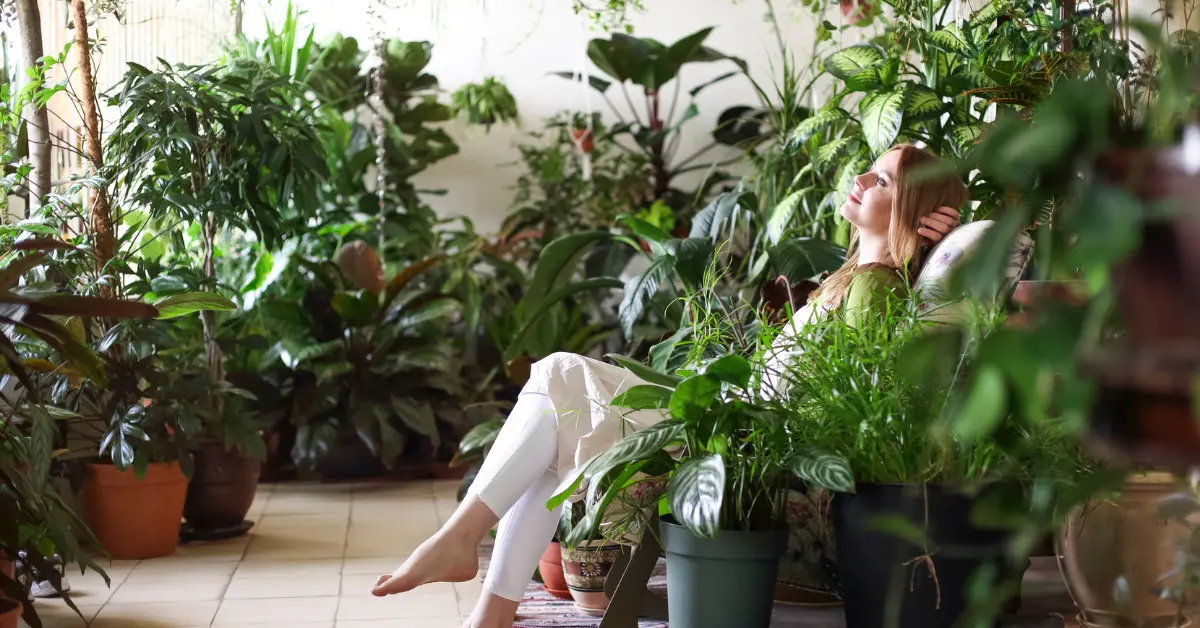Introduction
Reducing your carbon footprint doesn’t require drastic lifestyle changes—small adjustments at home can make a significant difference. A carbon footprint is the total amount of greenhouse gases produced by our actions, from heating our homes to the products we buy. By making eco-friendly choices, you’re not only contributing to a healthier planet but also potentially lowering utility costs and creating a more sustainable lifestyle.
Here are ten straightforward, effective ways to reduce your carbon footprint at home. Each tip is designed to be practical and easy to implement, helping you create an environmentally conscious household with minimal effort.
1. Switch to Energy-Efficient Lighting
One of the simplest ways to lower your carbon footprint is by switching to LED or energy-saving light bulbs. LED lights use up to 80% less energy than traditional incandescent bulbs and last much longer, meaning fewer replacements and reduced waste. They’re available in various color temperatures, from warm white to daylight, so you can find the perfect lighting for any room.
How it Helps
- Reduces energy consumption, lowering both your carbon footprint and utility bills.
- LEDs last significantly longer than incandescent bulbs, minimizing waste and replacement costs.
- Available in dimmable and smart options, allowing for additional energy control.
Quick Tip:
Try installing LED bulbs in high-traffic areas, such as the kitchen and living room, where lights are used frequently. Consider smart LED bulbs that can be controlled through apps to further reduce usage when not needed.
2. Unplug Appliances When Not in Use
Many electronic devices continue to consume power even when they’re turned off, a phenomenon known as “phantom power” or “vampire energy.” By unplugging appliances and chargers when they’re not in use, you can save up to 10% on your electricity bill. Devices like TVs, coffee makers, and microwaves are common culprits of phantom power.
How it Helps
- Reduces unnecessary energy consumption, directly lowering your carbon footprint.
- Saves money on electricity by minimizing wasted power.
- Protects appliances from power surges, extending their lifespan.
Quick Tip:
Use a power strip for multiple devices in one area, such as an entertainment center. Simply switch off the strip to cut power to all devices at once, making it easier to manage energy usage.
3. Opt for a Programmable Thermostat
Heating and cooling are major contributors to household energy consumption. A programmable or smart thermostat allows you to set specific temperatures for different times of the day, reducing energy usage when you’re not at home. Some smart thermostats even learn your habits and adjust settings automatically for optimal efficiency.
How it Helps
- Reduces energy usage by efficiently managing heating and cooling, especially during off-peak times.
- Minimizes greenhouse gas emissions associated with excessive heating and cooling.
- Can lead to significant savings on your energy bill, making it a cost-effective investment.
Quick Tip:
Set your thermostat to lower the temperature at night and during the day when the house is empty. For additional savings, consider pairing it with energy-efficient HVAC systems.
4. Reduce, Reuse, Recycle
Adopting the “Reduce, Reuse, Recycle” mindset is one of the most effective ways to minimize waste and conserve resources. By reducing consumption, reusing items, and recycling whenever possible, you can significantly lower the amount of waste your household sends to landfills. Start by limiting single-use plastics, reusing containers and bags, and separating recyclables like glass, paper, and metal.
How it Helps
- Conserves natural resources by reducing the demand for new materials.
- Minimizes waste in landfills, where decomposing waste emits greenhouse gases.
- Reduces pollution associated with the production and disposal of consumer goods.
Quick Tip:
Set up a dedicated recycling station at home to make sorting recyclables easier. Consider composting food scraps and yard waste to reduce landfill waste further.
5. Use Water-Saving Fixtures
Water-saving fixtures like low-flow showerheads, faucet aerators, and dual-flush toilets help reduce water consumption without sacrificing performance. These fixtures limit water flow, which is especially important in areas facing water scarcity. By conserving water, you’re also lowering the energy needed to heat and pump water through your home.
How it Helps
- Reduces household water usage, conserving this precious resource.
- Lowers energy needed for water heating, reducing carbon emissions.
- Reduces your water bill, making it a budget-friendly eco-upgrade.
Quick Tip:
Start with a low-flow showerhead for an easy, impactful change, or try faucet aerators for sinks. These small devices are inexpensive and simple to install.
6. Switch to Eco-Friendly Cleaning Products
Many conventional cleaning products contain harsh chemicals that contribute to indoor air pollution and can harm the environment when washed down the drain. Eco-friendly cleaning products are biodegradable, non-toxic, and often made from plant-based ingredients, making them safer for your home and the planet. Consider using multipurpose cleaners, which reduce packaging waste and simplify your cleaning routine.
How it Helps
- Reduces harmful chemicals in your home, improving indoor air quality.
- Minimizes water pollution, as eco-friendly products break down more easily in the environment.
- Often comes in reusable or recyclable packaging, cutting down on plastic waste.
Quick Tip:
Look for brands like Seventh Generation and Method that prioritize sustainable packaging and safe ingredients. Alternatively, try DIY cleaners using ingredients like vinegar, baking soda, and essential oils.
7. Grow Indoor Plants for Better Air Quality
Indoor plants are not only beautiful decor pieces but also help purify the air by absorbing carbon dioxide and releasing oxygen. Certain plants, like snake plants, spider plants, and peace lilies, can even remove toxins such as formaldehyde and benzene from the air. Indoor plants can improve your home’s air quality, enhance well-being, and add a calming touch of greenery to any space.
How it Helps
- Improves indoor air quality by reducing airborne toxins and increasing oxygen levels.
- Creates a natural, calming atmosphere that reduces stress and boosts mood.
- Encourages sustainable decor by adding natural beauty to your home.
Quick Tip:
Start with easy-to-care-for plants like pothos, snake plants, or ZZ plants, which thrive indoors with minimal maintenance. Place them in areas where you spend a lot of time, like your workspace or living room, to maximize air purification benefits.
8. Shop Local and Buy in Bulk
Buying locally grown produce and bulk items reduces the environmental impact associated with long-distance transportation and excessive packaging. Locally sourced products typically have a smaller carbon footprint since they don’t require extensive shipping. Bulk buying further minimizes packaging waste, especially when using reusable containers or bags.
How it Helps
- Reduces carbon emissions from transporting goods over long distances.
- Minimizes plastic and packaging waste, which helps reduce landfill contributions.
- Supports local businesses, helping strengthen your community’s economy.
Quick Tip:
Visit local farmers’ markets for fresh, in-season produce, and look for bulk sections at grocery stores for items like grains, nuts, and spices. Bring your own reusable bags and containers to cut down on packaging waste.
9. Insulate Your Home for Energy Efficiency
Proper insulation is key to reducing your home’s heating and cooling needs. Insulating your walls, attic, and floors can help keep your home warm in the winter and cool in the summer, reducing the need for excessive heating or air conditioning. Weatherproofing doors and windows also helps by preventing drafts and conserving energy.
How it Helps
- Reduces energy consumption for heating and cooling, cutting down on carbon emissions.
- Lowers utility bills by maintaining a stable indoor temperature.
- Improves comfort levels at home, creating a cozier environment.
Quick Tip:
If you’re on a budget, start with affordable weatherproofing products, like door sweeps and window film. For a long-term investment, consider adding insulation to your attic or walls to enhance your home’s energy efficiency.
10. Use Renewable Energy Sources
Switching to renewable energy sources is one of the most impactful ways to reduce your carbon footprint. If installing solar panels isn’t an option, many utility companies offer green energy plans that allow you to source electricity from wind, solar, or hydropower. Even a small investment in renewable energy helps reduce reliance on fossil fuels.
How it Helps
- Decreases reliance on non-renewable resources like coal and natural gas.
- Reduces greenhouse gas emissions, contributing to a cleaner environment.
- Promotes the growth of the renewable energy sector, helping shift toward sustainable energy.
Quick Tip:
Contact your energy provider to see if green energy plans are available. Alternatively, consider smaller solar-powered devices for your home, such as solar chargers or outdoor lights, to gradually incorporate renewable energy.
Conclusion
Reducing your carbon footprint at home doesn’t have to be overwhelming. By adopting just a few of these eco-friendly habits, you can make a significant impact on your environmental footprint while saving money and creating a healthier living space. From switching to LED lights to adding insulation and growing indoor plants, each action contributes to a more sustainable lifestyle.
Remember, creating a greener home is a journey—start with the changes that feel most achievable and gradually add more. The positive impact of each small step will accumulate over time, benefiting both the planet and your household. Sustainable living begins at home, and every effort counts in the fight against climate change.
Call to Action
Are you ready to reduce your carbon footprint? Start by choosing one or two of these tips to implement today! Do you have additional eco-friendly tips for the home? Share them in the comments below, and don’t forget to subscribe to our newsletter for more sustainable living insights.
Meta Description
Learn 10 simple ways to reduce your carbon footprint at home, from energy-saving tips to sustainable choices. Start living a greener, eco-friendly lifestyle today.
Focus Keyword
Reduce Carbon Footprint at Home






















